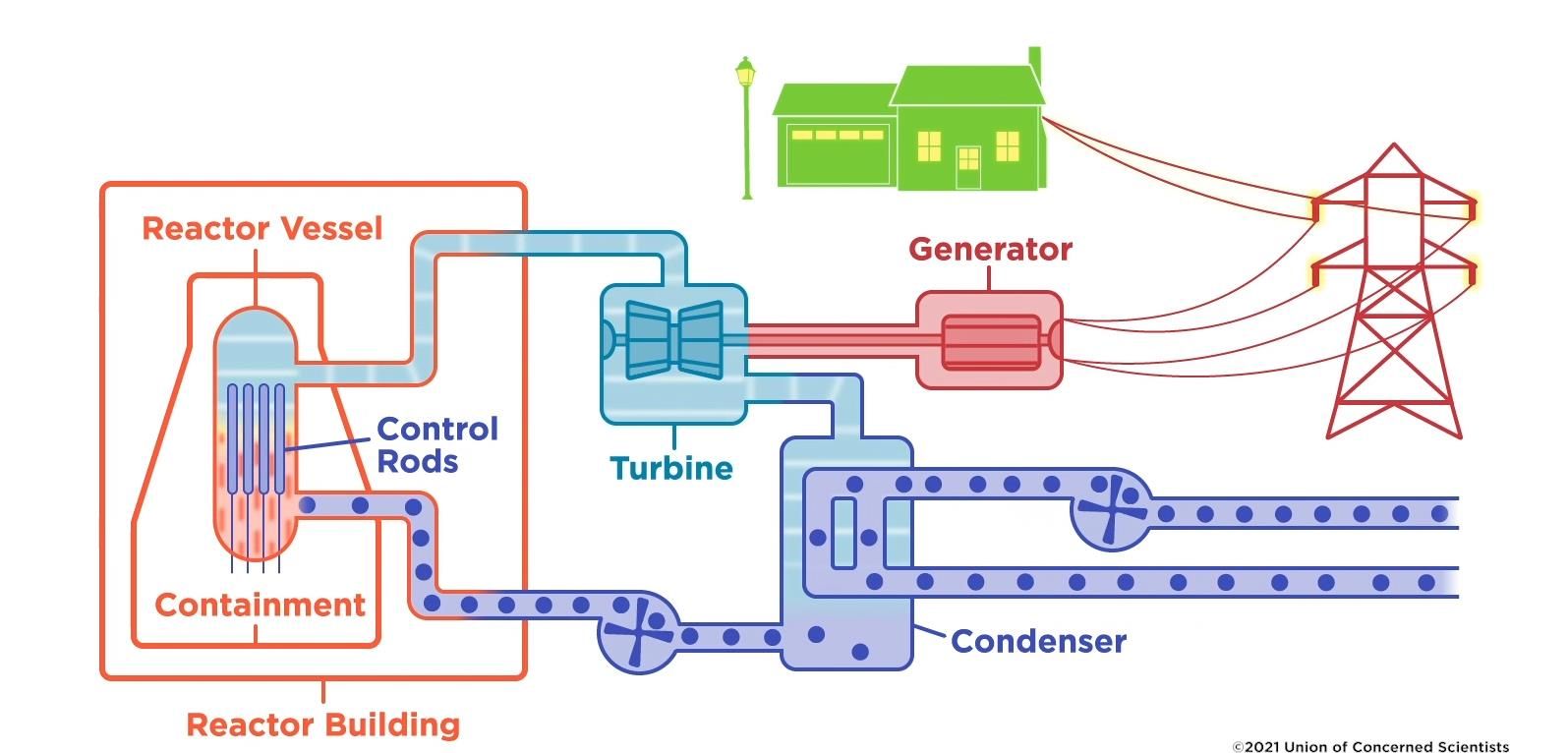
In the United States, two-thirds of the reactors are pressurized water reactors (PWR) and the rest are boiling water reactors (BWR). In a boiling water reactor, shown above, the water is allowed to boil into steam, and is then sent through a turbine to produce electricity.
In pressurized water reactors, the core water is held under pressure and not allowed to boil. The heat is transferred to water outside the core with a heat exchanger (also called a steam generator), boiling the outside water, generating steam, and powering a turbine. In pressurized water reactors, the water that is boiled is separate from the fission process, and so does not become radioactive.
After the steam is used to power the turbine, it is cooled off to make it condense back into water. Some plants use water from rivers, lakes or the ocean to cool the steam, while others use tall cooling towers. The hourglass-shaped cooling towers are the familiar landmark of many nuclear plants. For every unit of electricity produced by a nuclear power plant, about two units of waste heat are rejected to the environment.
Commercial nuclear power plants range in size from about 60 megawatts for the first generation of plants in the early 1960s, to over 1000 megawatts. Many plants contain more than one reactor. The Palo Verde plant in Arizona, for example, is made up of three separate reactors, each with a capacity of 1,334 megawatts.
Some foreign reactor designs use coolants other than water to carry the heat of fission away from the core. Canadian reactors use water loaded with deuterium (called "heavy water"), while others are gas cooled. One plant in Colorado, now permanently shut down, used helium gas as a coolant (called a High Temperature Gas Cooled Reactor). A few plants use liquid metal or sodium.
Post time: Nov-11-2022

